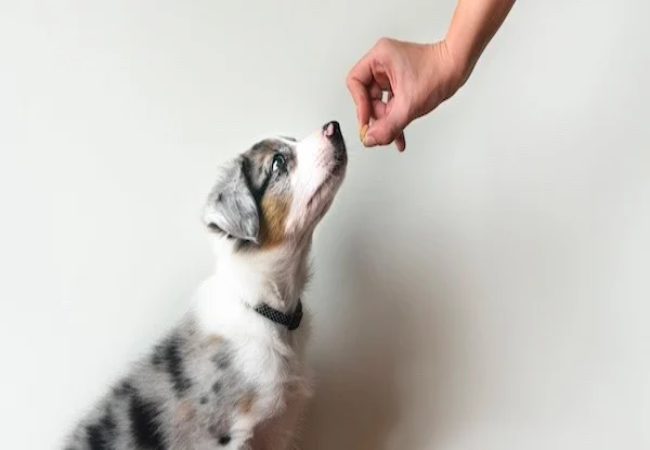Puppy Proofing Your Home 2025: Vet’s Checklist for Safety & Sanity 🏡🐶

In this article
Puppy Proofing Your Home 2025: Vet’s Checklist for Safety & Sanity 🏡🐶
By Dr. Duncan Houston BVSc
Welcoming a curious puppy into your home brings joy—and responsibility. Like puppy-proofing for safety is essential for preventing accidents, building confidence, and creating calm routines. With this vet-approved checklist,
1. 🗑️ Secure Trash, Recyclables & Personal Bags
- Use locking or lidded bins kept in cabinets or blocked off.
- Store handbags, backpacks, and gym bags out of reach—these can contain toxic items like xylitol gum or medications.
2. 🔌 Manage Electrical Cords & Blind Cords
- Bundle and hide cords using covers—chew prevention and shock avoidance.
- Secure blind cords to prevent strangulation risks.
3. 🚫 Store Chemicals, Cleaning Supplies & Medications
- Keep household chemicals, human and pet meds, and cleaners locked or high-up.
- Avoid spill risks—do not administer meds near floor level.
4. 🌿 Remove Toxic Plants & Dangerous Lawn Products
- Identify and remove houseplants like sago palm, philodendron, and lilies.
- Use pet-safe lawn products and avoid rodent bait, pesticides.
5. 🪑 Remove Choking & Ingestion Hazards
- Pick up small objects: batteries, coins, magnets, and remote parts.
- Keep shoes, socks, craft supplies off the floor—they tempt teething puppies.
6. 🚧 Block Off Unsafe Areas
- Use baby gates or pens to restrict access to stairs, kitchens, and garages.
- Cover balcony rails and secure pool barriers for outdoor viewing only.
7. 🏡 Secure Outdoor & Yard Hazards
- Check yard fencing, bury wire to prevent escape.
- Avoid fertilisers with bone meal; keep pool areas gated.
8. 🧳 Create Safe Zones and Retreat Spaces
- Set up a crate or pen as a puppy’s den—linked to potty training and rest.
- Define low-traffic areas for calm downtime with Purrz diffusers to ease anxiety.
9. 🧸 Provide Appropriate Chews & Enrichment
- Offer a variety of chew toys for teething and exploration.
- Use interactive tools like Woopf sniff mats to redirect chewing to safe items.
10. 👀 Supervision & Training Strategies
- Never leave a young puppy completely unsupervised.
- Train “leave it” and “drop it” early to reinforce boundaries.
- Monitor via camera when not directly present.
11. 📋 Maintenance Checklist & Re‑Review
- Weekly rounds: scan floors for dropped items, toxic plants, trash bits.
- Monthly check: secure new items, tuck away cords, re-lock cabinets.
- Update with developmental stages: puppy grows—reach changes, so update proofing.
12. 🛠 Tools & Supplies You’ll Need
- Locking trash cans & childproof cabinet latches.
- Cord covers, outlet protectors, and blind cord wind-ups.
- Baby gates, pens, and crates sized for a pup.
- Chew toys (teething and enrichment), no-chew spray.
14. 🚨 Emergency Scenarios & What to Do
- If ingestion of a toxic substance: contact your vet or Poison Control immediately.
- Chew leading to electrical shock: unplug, check pet, call vet.
- Fall from height: check for injuries, limit movement, call vet.
15. ✅ Final Takeaways
- Removing hazards on the floor and at puppy level is essential.
- Barriers and retreat zones support training and safety.
- Appropriate chews and enrichment prevent destructive behavior.
- Supervision and routine re-checks make all the difference.



